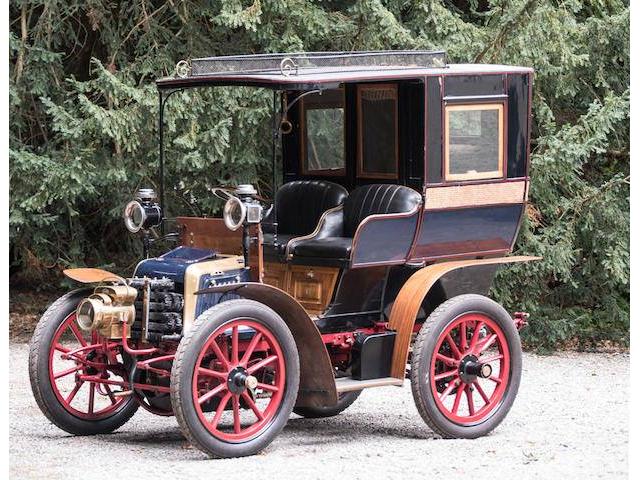1898 Germain 6HP Twin-Cylinder Open Drive Limousine
- Brand: Ateliers Germain
1898 Germain 6HP Twin-Cylinder Open Drive Limousine
The Paris-Bordeaux-Paris race of 1895 had demonstrated, mainly thanks to Panhard-Lavassor and Peugeot, the superiority of the petrol engine over their steam and electric competitors. A group of Belgian industrialists, upon this observation, formed a group to study this new form of Automobile. They acquired several vehicles from Panhard-Levassor, Benz, Mors, Delahaye and Léon Bollée in order to study them more closely as a viable form of transportation for their own country.
The Ateliers Germain, located in Monceau-sur-Sambre, was a participating member of this group and had made the decision in 1897 to undertake the construction of automobiles. Up until that point their efforts were focused on manufacturing railway equipment, so a new special workshop was built and fitted with precision tools specifically to produce vehicles. Initially, a workforce of 200 men built the 2 cylinder 6V model with 6 horsepower. The first finished product rolled out of the factory on June 25, 1898 with many more to follow in the coming months. By the end of 1898, the factory had involved itself in manufacturing Elan carts under license, and in April 1900, they added a 12 horsepower 4 cylinder, known as the 12CV, into the range of products.
In 1902, Germain acquired the license from Loppart and Cie to construct the Renault light-duty car for Belgium. These Renaults featured seriously reinforced front and rear axles to resist the rough Belgian roads and were built with a new range of 7.5, 10, 15 and 20 HP motors in the Panhard system format. In the beginning of 1903, many commercial vehicles were also manufactured, from a 500-kilogram truck to the 5-tonne payload truck, and later that year, an experimental bus was provided to the city of London.
In December 1903, the factory exhibited at the Salon de Paris the new Germain Standard series which would turn out to be a great success. There were three four-cylinder models, the 16/22, the 24/32 and the 35/45. In 1904 business was prosperous, and exports, especially to England, flourished, and Germain celebrated the exit of their thousandth carriage.
Ateliers Germain would perpetuate well in the 1960s before merging with Société Anglo-Franco-Belge to form Etablissements Germain Anglo, but automobile manufacture had long since been left by the wayside in place of railcars. Throughout this time, the company was known to have kept its first Panhard-Levassor derived automobile.
Descriptions & pictures by bonhams
| Specification | |
| Production Start | 1898 |
| Country of origin | Belgium |






























